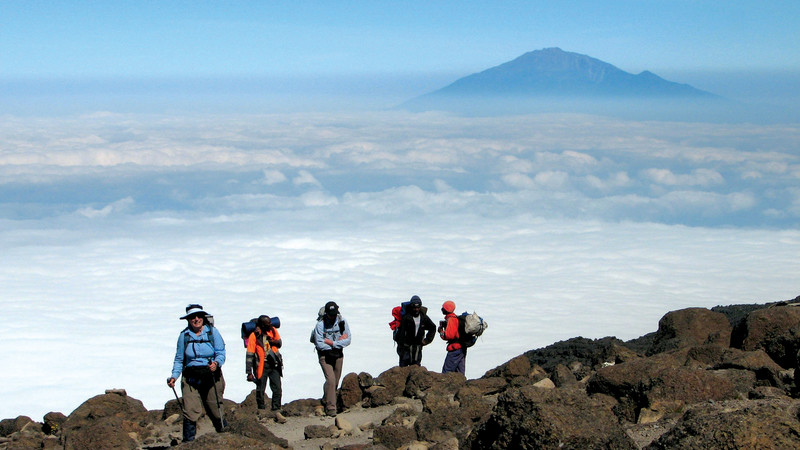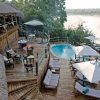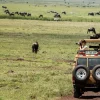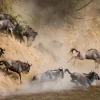Climbing Mount Kilimanjaro is a dream for many adventurers, but the journey to the summit can come with a hefty price tag. As the continent’s highest peak, Kilimanjaro offers breathtaking views and an exhilarating challenge; yet, understanding the true cost of undertaking this iconic trek is essential for any aspiring climber. From permits and guides to gear and accommodations, the expenses can add up quickly, often leaving potential climbers feeling overwhelmed. In this comprehensive guide, we break down the costs associated with climbing Kilimanjaro, providing you with a clear budgeting plan to help you navigate this once-in-a-lifetime adventure without breaking the bank. Whether you’re a seasoned mountaineer or a first-time trekker, our insights will equip you with the knowledge needed to make the most of your unforgettable Kilimanjaro experience. Let’s uncover the true cost of this majestic climb and help you start planning your adventure today!
Overview of Climbing Mount Kilimanjaro
Mount Kilimanjaro, standing tall at 5,895 meters (19,341 feet), is not only the highest peak in Africa but also one of the most sought-after trekking destinations in the world. Located in Tanzania, this dormant volcano presents a unique challenge that attracts climbers from around the world. The journey to the summit is more than just a physical challenge; it’s a test of mental endurance, determination, and careful planning. With various routes leading to the top, each offering different experiences and levels of difficulty, climbers can choose a path that best suits their skill level and preferences.
The allure of Kilimanjaro lies not just in its height but also in its diverse ecosystems, which range from lush rainforests to alpine deserts and glacial landscapes. This diversity makes the trek an unforgettable journey through multiple climatic zones, each with its unique flora and fauna. As you ascend, you’ll experience breathtaking scenery and ever-changing environments, making the climb a truly immersive experience.
However, the adventure doesn’t come cheap. From the mandatory park fees to hiring experienced guides and porters, the costs associated with climbing Kilimanjaro can add up quickly. Understanding these expenses in detail is crucial for anyone planning to take on this challenge. In the following sections, we will break down the various factors that influence the cost of your climb, helping you prepare financially for this incredible adventure.
Factors Influencing the Cost of Your Climb
Several factors contribute to the overall cost of climbing Mount Kilimanjaro, and understanding these can help you budget more effectively. One of the primary costs is the park fees, which are mandatory for all climbers. These fees contribute to the maintenance of the national park and the conservation of its natural beauty. The cost of park fees can vary depending on the duration of your trek and the route you choose, but they typically range from $70 to $100 per day.
Another significant factor is the choice of route. There are several routes to the summit, including the Marangu, Machame, Lemosho, Rongai, and Northern Circuit routes. Each route has its unique characteristics, such as the level of difficulty, scenery, and duration. The longer and more challenging routes tend to be more expensive due to the increased number of days spent on the mountain, which in turn increases the cost of park fees, guide services, and other logistical expenses.
The level of support you choose also plays a crucial role in determining the cost of your climb. Climbing Kilimanjaro requires the assistance of experienced guides, porters, and cooks, who ensure your safety and comfort throughout the trek. The number of support staff you need will depend on the size of your group and the route you take. Additionally, the quality of the tour operator you choose can significantly impact the cost, as reputable operators with experienced staff and high-quality equipment may charge more for their services.
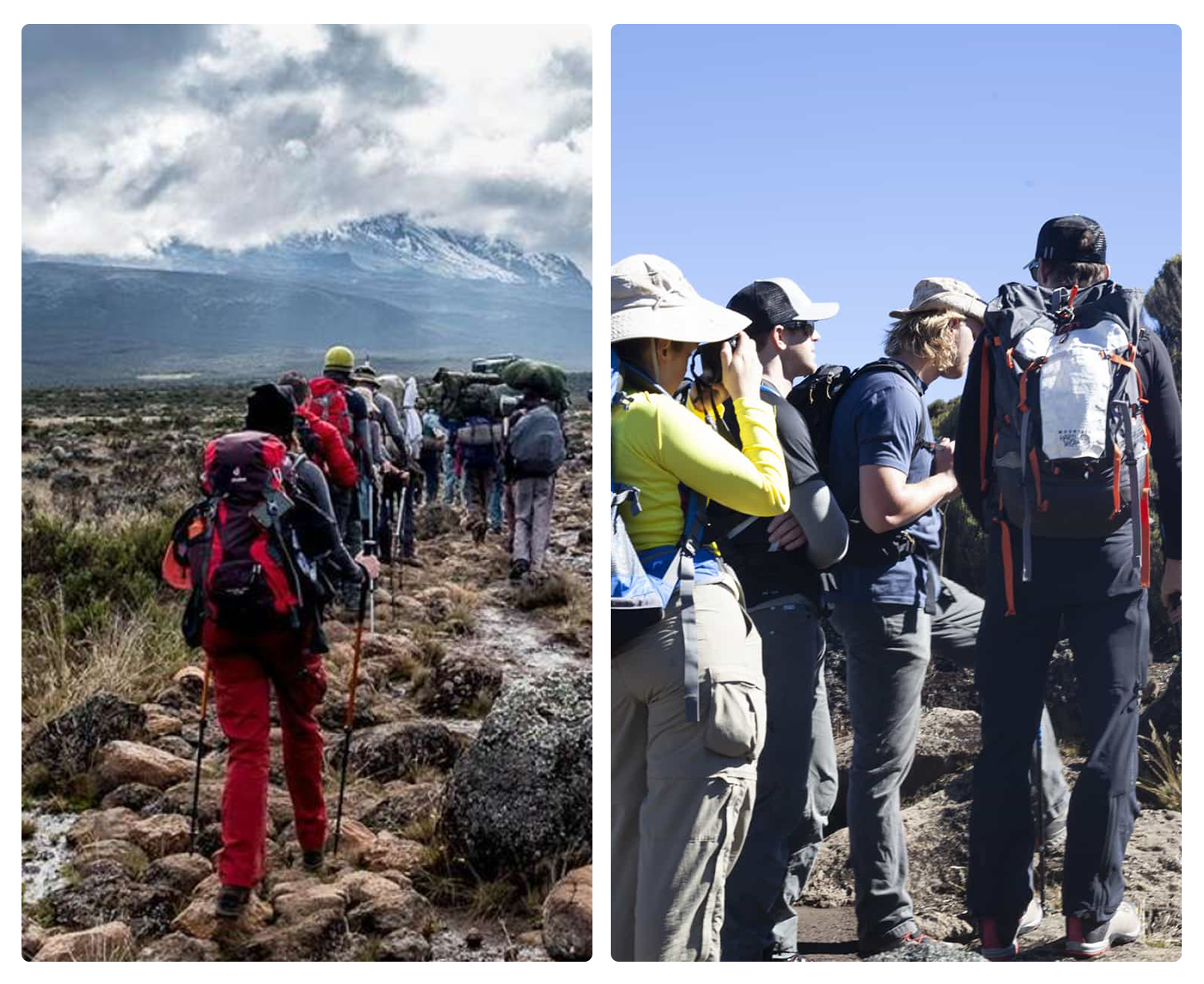
Breakdown of Climbing Packages: What’s Included?
When planning your Kilimanjaro climb, it’s essential to understand what’s included in the climbing packages offered by tour operators. Most packages cover the basics, such as park fees, guide and porter services, meals, and accommodations on the mountain. However, the specifics can vary significantly between operators, so it’s important to carefully review what each package includes to ensure you’re getting the best value for your money.
Park fees are a major component of the cost, and as mentioned earlier, these fees cover your entry into Kilimanjaro National Park and contribute to the conservation efforts. Guide and porter services are also included in most packages, and these individuals are crucial to your success on the mountain. Experienced guides provide valuable knowledge about the terrain, weather conditions, and the best strategies for a successful summit, while porters carry your gear, set up camp, and prepare meals, allowing you to focus on the climb.
Accommodations and meals are another important aspect of the climbing packages. Depending on the route, you may stay in tents or huts along the way. Meals are typically included and are designed to provide the necessary nutrition and energy for the strenuous trek. Some packages may also include additional services such as pre- and post-climb accommodation, transportation to and from the mountain, and emergency evacuation insurance. Be sure to clarify these details with your tour operator to avoid any unexpected expenses.
Comparing Budget vs. Luxury Tours
When it comes to climbing Kilimanjaro, there are options to suit various budgets, ranging from budget-friendly tours to luxury experiences. Understanding the differences between these options can help you choose the right tour that aligns with your expectations and financial constraints. Budget tours are typically more affordable and may offer fewer frills, while luxury tours provide a higher level of comfort and additional services.
Budget tours generally focus on providing the essentials needed for a successful climb. These tours may have larger group sizes, basic camping equipment, and simpler meals. While the quality of service may not be as high as luxury tours, budget tours still ensure that you have the necessary support and guidance to reach the summit. These tours are ideal for travelers who are looking to experience Kilimanjaro without spending a fortune.
On the other hand, luxury tours offer a more comfortable and personalized experience. These tours often include smaller group sizes, higher-quality camping equipment, and gourmet meals prepared by skilled chefs. Luxury tours may also provide additional services such as portable toilets, private tents, and more experienced guides. The higher cost of luxury tours reflects the enhanced level of comfort and personalized attention, making them a great option for those who prefer a more pampered experience on the mountain.
Additional Costs to Consider: Gear, Tips, and More
In addition to the costs covered by your climbing package, there are several additional expenses to consider when planning your Kilimanjaro adventure. One of the most significant additional costs is the gear you’ll need for the climb. Proper clothing, footwear, and equipment are essential for a safe and comfortable trek. While some items can be rented, it’s often advisable to invest in high-quality gear that will ensure your comfort and safety on the mountain.
Tipping is another important consideration, as it is customary to tip your guides, porters, and cooks for their hard work and support throughout the climb. Tips are a significant part of their income, and it’s important to budget for this expense. The recommended tipping amount varies, but it’s generally suggested to allocate around $300 to $500 per climber for tips, depending on the size of your support team and the duration of your climb.
Other additional costs to consider include travel insurance, which is essential for covering any medical emergencies, trip cancellations, or lost baggage. You may also need to budget for visas, vaccinations, and any pre- or post-climb accommodations and meals that are not included in your climbing package. By accounting for these additional expenses, you can ensure that you have a comprehensive budget that covers all aspects of your Kilimanjaro adventure.
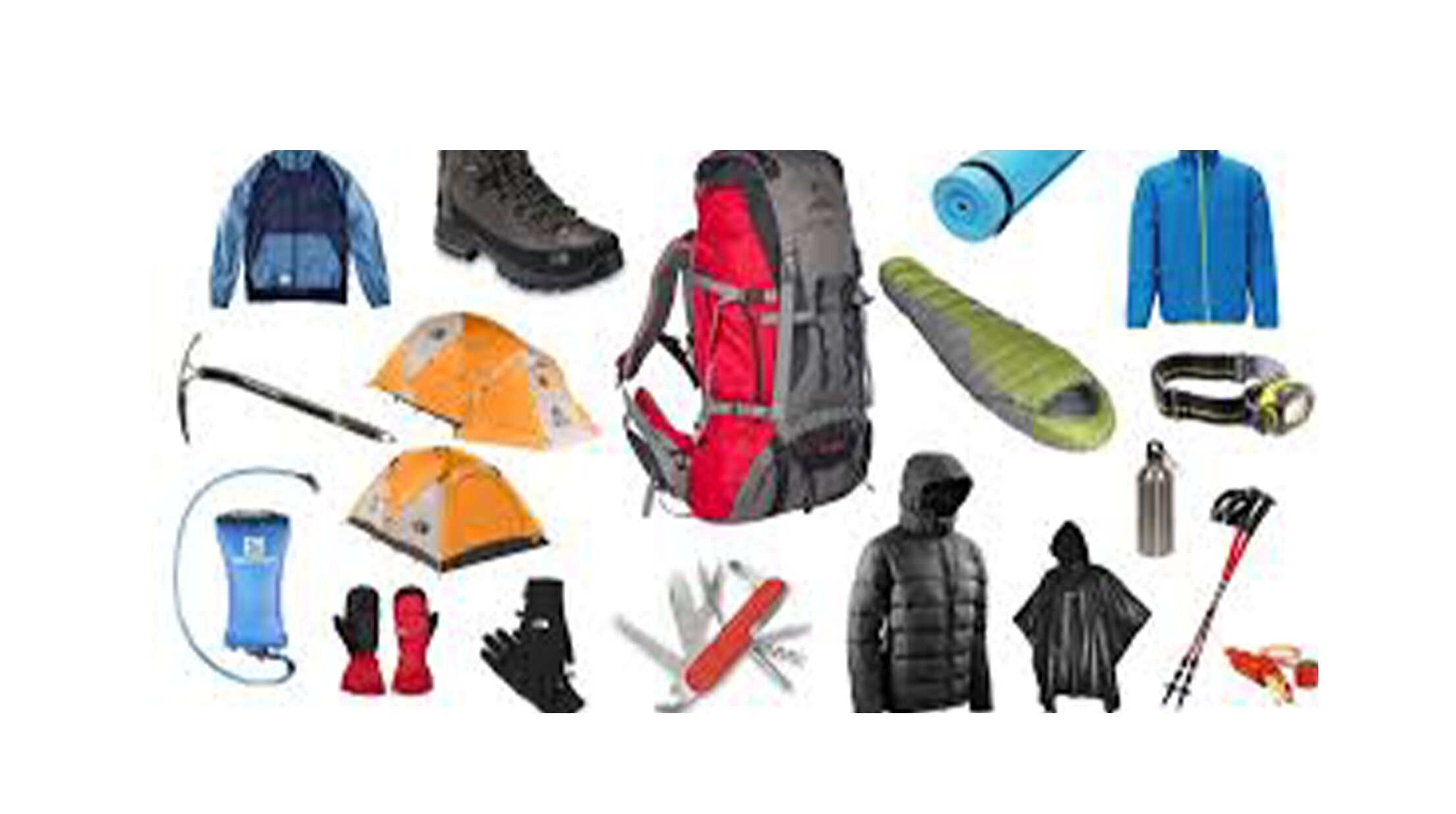
The Role of Seasonality in Pricing
The time of year you choose to climb Mount Kilimanjaro can have a significant impact on the cost of your adventure. Kilimanjaro’s trekking seasons are influenced by the region’s weather patterns, with certain times of the year being more favorable for climbing than others. Understanding the role of seasonality in pricing can help you plan your climb during a time that fits your budget and offers the best chance of a successful summit.
The main trekking seasons on Kilimanjaro are during the dry months, from January to mid-March and from June to October. These periods offer the best weather conditions, with clear skies, lower chances of rain, and more stable temperatures. As a result, these months are the most popular for climbers, leading to higher demand for guides and services. Consequently, prices tend to be higher during these peak seasons due to the increased demand.
Conversely, the rainy seasons, from mid-March to May and November to December, see fewer climbers on the mountain. The weather during these months can be more unpredictable, with higher chances of rain and colder temperatures. While the conditions may be less favorable, the lower demand for services can result in reduced prices for climbing packages. If you’re looking to save money and don’t mind the potential challenges posed by the weather, climbing during the off-peak seasons can be a more budget-friendly option.
How to Choose the Right Tour Operator
Selecting the right tour operator is crucial to ensuring a successful and enjoyable Kilimanjaro climb. With numerous operators offering a range of services and packages, it’s essential to do thorough research to find one that meets your needs and budget. Here are some key factors to consider when choosing a tour operator for your Kilimanjaro adventure.
First, look for operators with a strong reputation and positive reviews from previous climbers. Online reviews, testimonials, and recommendations from fellow travelers can provide valuable insights into the quality of service and support offered by a tour operator. Additionally, reputable operators often hold certifications and memberships in professional organizations, which can be an indicator of their commitment to safety, quality, and ethical practices.
Second, consider the experience and expertise of the guides and support staff. Experienced guides are not only knowledgeable about the terrain and weather conditions but also skilled in handling emergencies and providing valuable support throughout the climb. Make sure to inquire about the training and qualifications of the guides and porters, as their expertise can significantly impact your chances of a successful summit.
Finally, compare the services and inclusions offered by different operators. While price is an important factor, it’s equally important to consider what is included in the package. Look for operators that provide comprehensive services, including high-quality equipment, nutritious meals, and adequate support staff. By carefully evaluating these factors, you can choose a tour operator that offers the best value and ensures a safe and memorable Kilimanjaro experience.
Tips for Budgeting Your Kilimanjaro Adventure
Budgeting for your Kilimanjaro climb requires careful planning and consideration of various expenses. Here are some practical tips to help you create a comprehensive budget that covers all aspects of your adventure.
Start by researching the costs associated with different routes and climbing packages. Determine which route best suits your preferences and fitness level, and compare the prices offered by various tour operators. Keep in mind that while budget tours may be more affordable, they may also come with fewer inclusions and lower levels of comfort. Conversely, luxury tours may offer a higher level of service but at a higher cost.
Next, consider the additional expenses that are not typically covered by climbing packages. These may include gear, tips, travel insurance, visas, vaccinations, and pre- and post-climb accommodations and meals. Make a list of all the items you’ll need for the climb and research the costs of purchasing or renting high-quality gear. Allocate a budget for tipping your guides, porters, and cooks, and ensure you have adequate travel insurance to cover any unforeseen circumstances.
Finally, be mindful of the role of seasonality in pricing. If you’re looking to save money, consider climbing during the off-peak seasons when prices may be lower. However, be prepared for the potential challenges posed by the weather during these times. By carefully planning and accounting for all expenses, you can create a realistic budget that allows you to enjoy your Kilimanjaro adventure without financial stress.
Real-Life Cost Examples from Recent Climbers
Understanding the real-life costs associated with climbing Kilimanjaro can provide valuable insights and help you set realistic expectations for your budget. Here are some examples from recent climbers who have successfully summited Kilimanjaro, highlighting the various expenses they incurred.
One climber, who chose the Machame route, reported spending approximately $2,500 in total for their climb. This included a mid-range climbing package priced at $1,800, which covered park fees, guide and porter services, meals, and accommodations on the mountain. Additional expenses included $300 for gear rental, $400 for tips, and $150 for travel insurance. The climber also budgeted $100 for pre- and post-climb accommodations and meals, bringing the total cost to $2,750.
Another climber, who opted for a luxury tour on the Lemosho route, reported spending around $4,500. The luxury climbing package, priced at $3,200, included high-quality equipment, gourmet meals, private tents, and experienced guides. Additional expenses included $500 for gear purchases, $500 for tips, and $200 for travel insurance. The climber also allocated $100 for pre- and post-climb accommodations and meals, resulting in a total cost of $4,500.
A budget-conscious climber who chose the Marangu route reported spending approximately $1,800 in total. Their budget climbing package, priced at $1,200, included park fees, guide and porter services, basic meals, and accommodations in huts. Additional expenses included $200 for gear rental, $300 for tips, and $100 for travel insurance. The climber also budgeted $50 for pre- and post-climb accommodations and meals, bringing the total cost to $1,850.
Making the Most of Your Kilimanjaro Experience
Climbing Mount Kilimanjaro is a once-in-a-lifetime adventure that requires careful planning and budgeting. By understanding the various factors that influence the cost of your climb, you can create a comprehensive budget that covers all aspects of your journey. From choosing the right route and tour operator to accounting for additional expenses such as gear, tips, and travel insurance, thorough preparation is key to ensuring a successful and enjoyable trek.
Whether you opt for a budget-friendly tour or a luxury experience, the breathtaking views, diverse ecosystems, and sense of accomplishment that come with reaching the summit make the investment worthwhile. By following the tips and insights provided in this guide, you can navigate the costs associated with climbing Kilimanjaro and make the most of your adventure.
As you prepare for your Kilimanjaro climb, remember that the journey is as important as the destination. Embrace the challenges, savor the moments, and take in the stunning landscapes that make Kilimanjaro one of the most iconic trekking destinations in the world. With careful planning and a clear budget, you can embark on this incredible adventure with confidence and create memories that will last a lifetime.
